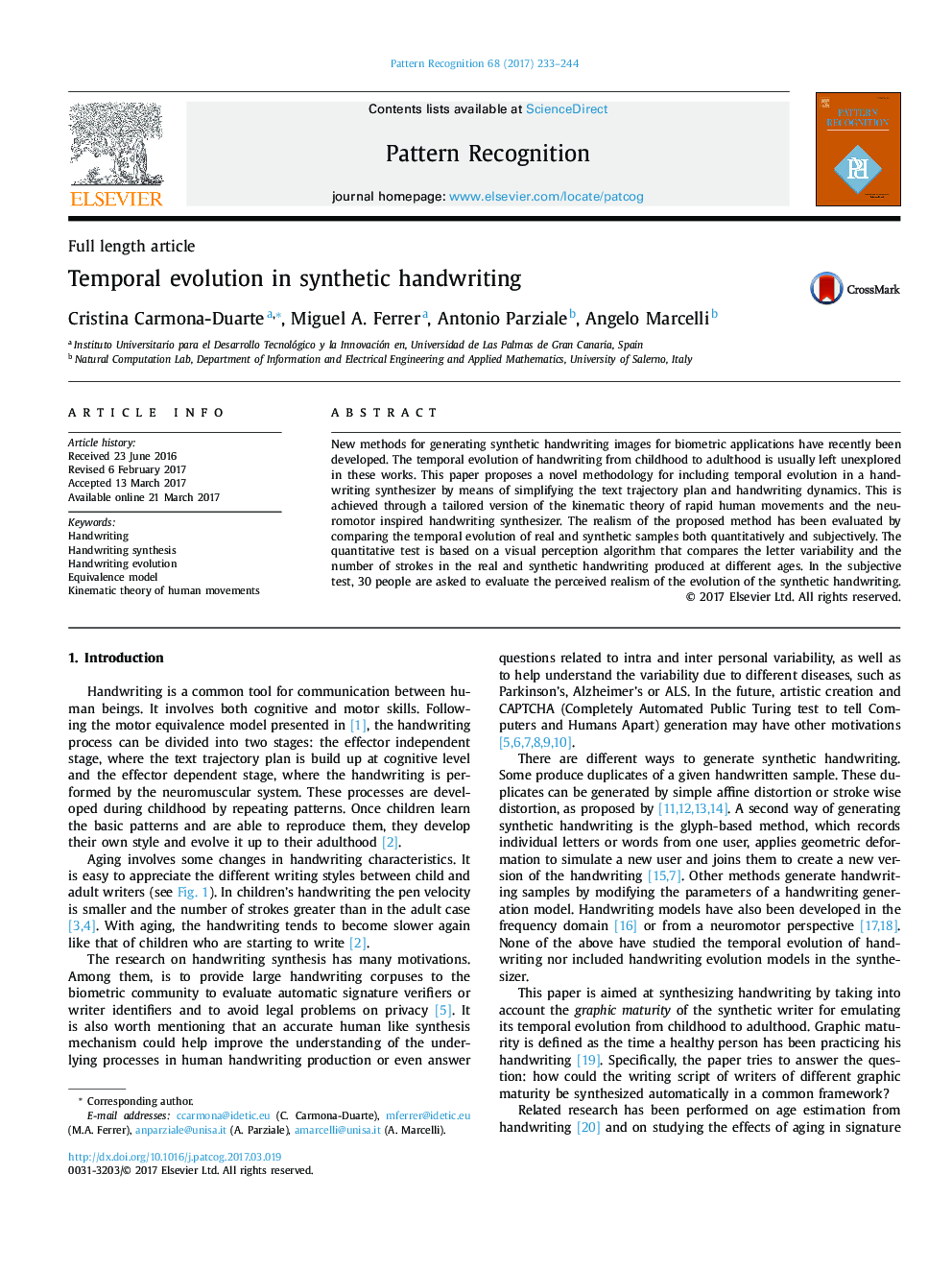| Article ID | Journal | Published Year | Pages | File Type |
|---|---|---|---|---|
| 4969877 | Pattern Recognition | 2017 | 12 Pages |
Abstract
New methods for generating synthetic handwriting images for biometric applications have recently been developed. The temporal evolution of handwriting from childhood to adulthood is usually left unexplored in these works. This paper proposes a novel methodology for including temporal evolution in a handwriting synthesizer by means of simplifying the text trajectory plan and handwriting dynamics. This is achieved through a tailored version of the kinematic theory of rapid human movements and the neuromotor inspired handwriting synthesizer. The realism of the proposed method has been evaluated by comparing the temporal evolution of real and synthetic samples both quantitatively and subjectively. The quantitative test is based on a visual perception algorithm that compares the letter variability and the number of strokes in the real and synthetic handwriting produced at different ages. In the subjective test, 30 people are asked to evaluate the perceived realism of the evolution of the synthetic handwriting.
Keywords
Related Topics
Physical Sciences and Engineering
Computer Science
Computer Vision and Pattern Recognition
Authors
Cristina Carmona-Duarte, Miguel A. Ferrer, Antonio Parziale, Angelo Marcelli,
